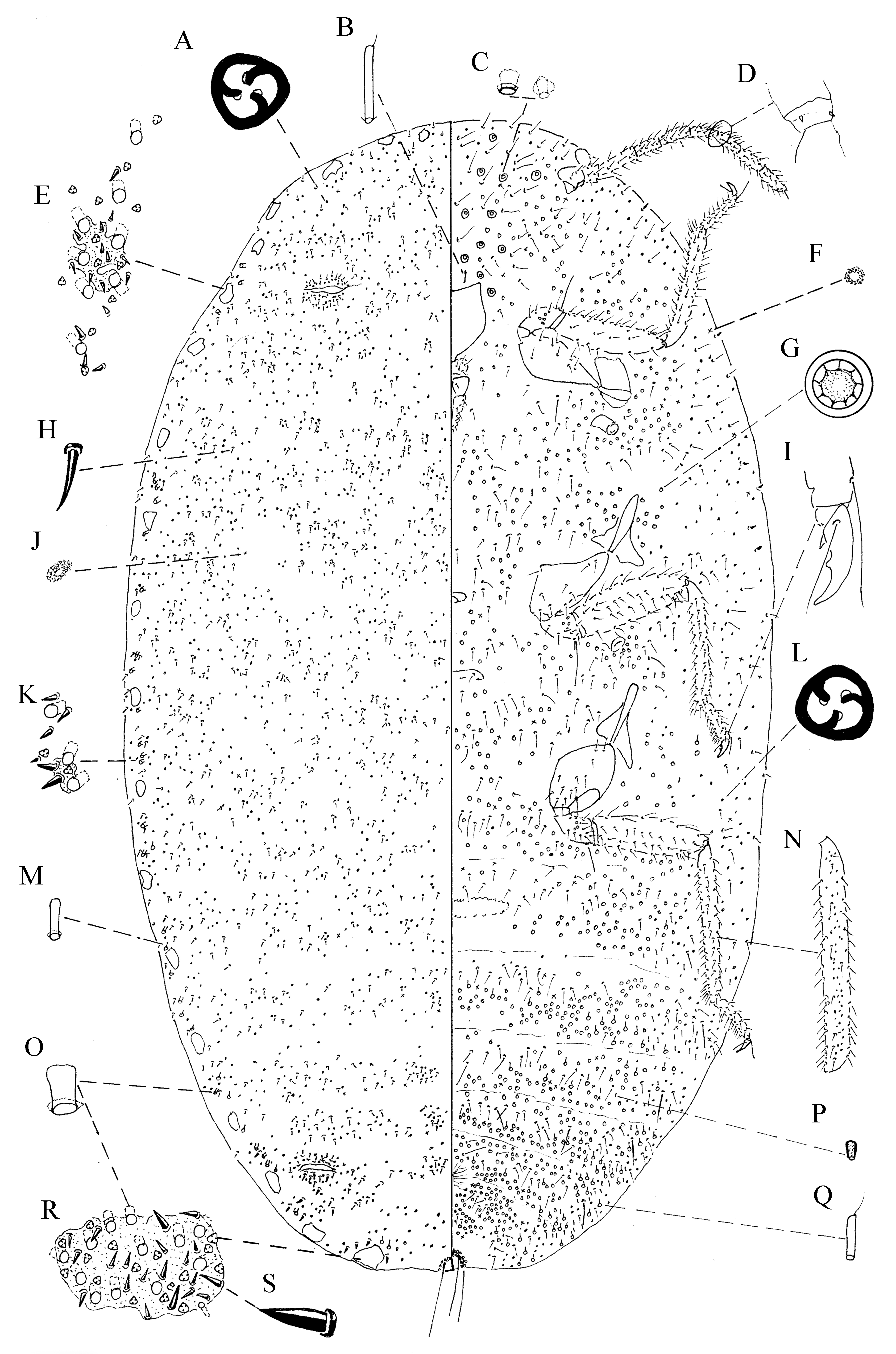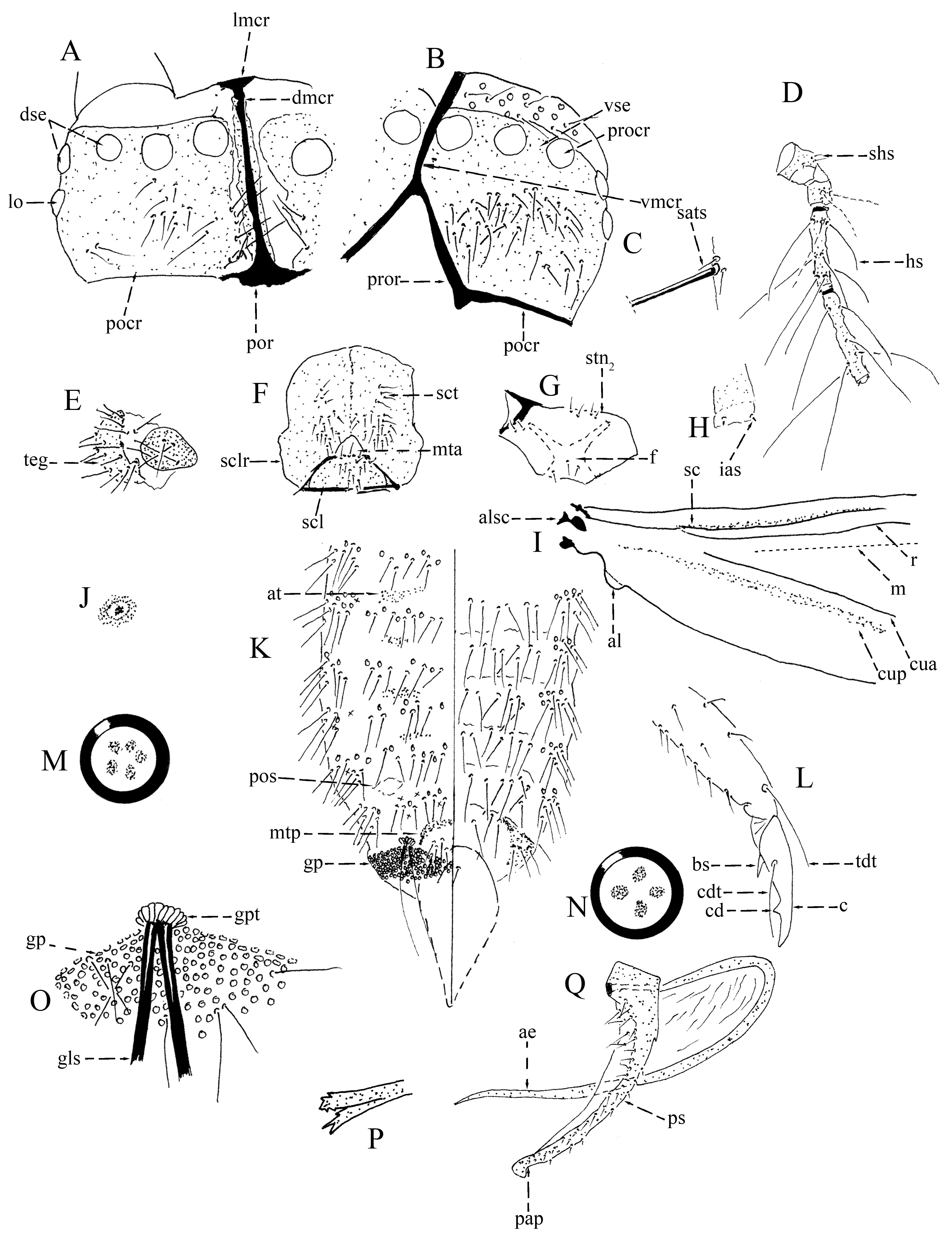Valid Names Results
Puto brom Powell & Miller, 2024 (Putoidae: Puto)Nomenclatural History
- Puto brom Powell & Miller 2024: 327. Type data: MEXICO: on Bromeliad leaf, 9/23/1974, by J. Kaiser & R. Duke.. Holotype, female, by original designation Type depository: Washington: United States National Entomological Collection, U.S. National Museum of Natural History, District of Columbia, USA; accepted valid name Notes: Paratypes: MEXICO: Veracruz, taken in quarantine at Brownsville, Texas, September 17, 1975, coll. Burgess, Chace, Arsego, ex. bromeliad leaf. (1 ad. ♂ on 1 slide) USNM. Illustr.
Common Names
Ecological Associates
Hosts:
Families: 1 | Genera: 1
- Bromeliaceae
- Bromeliaceae | PowellMi2024
Geographic Distribution
Countries: 1
- Mexico | PowellMi2024
Keys
- ZhengLiTa2025: pp.135 ( Adult (M) ) [Known adult males of Puto (revised from Powell & Miller 2024)]
- PowellMi2024: pp.303-304 ( Adult (F) ) [New World Puto species]
- PowellMi2024: pp.304-305 ( Adult (M) ) [Puto species]
Remarks
- Systematics: Puto brom is most similar to P. lasiorum (Cockerell, 1901) by having: (i) oral-rim type tubular ducts in the cerarii but not in the medial areas of the dorsum, and (ii) clusters of lanceolate setae dorsomedially on the posterior abdominal segments. It differs from P. lasiorum as follows (characters of P. lasiorum are presented in parentheses): (i) small cerarii, with the anal-lobe cerarius about half the size of the hind coxa (anal-lobe cerarius about equal in size to the hind coxa); (ii) dorsomedial clusters of lanceolate setae without conspicuous sclerotization (with conspicuous sclerotization); and (iii) two sizes of oral-rim type tubular ducts outside of abdominal cerarii on dorsum (with one size of oral-rim type tubular duct outside of the abdominal cerarii on dorsum). The male of presumed P. brom keys out separately from any other known Puto male. It is most similar to P. simmondsiae McKenzie, 1961 but differs in that the glandular pouch of P. brom is larger, each with about 230 pores (160 pores in P. simmondsiae). Only two other species of Puto are known from Guatemala: P. mexicanus (Cockerell, 1893) and P. ulter Ferris, 1950. The male of P. brom (?) has more setae on each tegula (20) than that of P. mexicanus (12) or P. ulter (8). Only two species of Puto are presently known on bromeliads, P. ulter and P. barberi. In addition to having fewer setae on the tegula, P. ulter also has clubbed tarsal digitules while P. brom (?) has simple tarsal digitules. Puto barberi is apparently parthenogenetic, no males are known (Villegas García et al. 2013).
- Structure: Slide-mounted adult female holotype 8.65 mm long, 5.4 mm wide; paratype 8.7 mm long, 5.15 mm wide; body elongate oval. Slide-mounted adult male; body elongate, with abdominal segment VIII produced laterally. (Powell & Miller 2024)
- General Remarks: Detailed description and illustration in Powell & Miller (2024).
Illustrations
Citations
- PowellMi2024: description, description of male, diagnosis, illustration, key, nymph, taxonomy, 327-331




